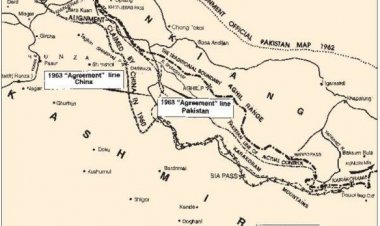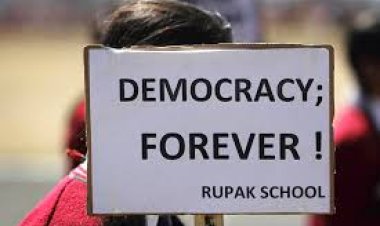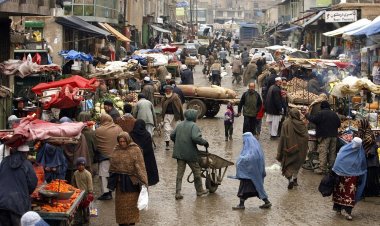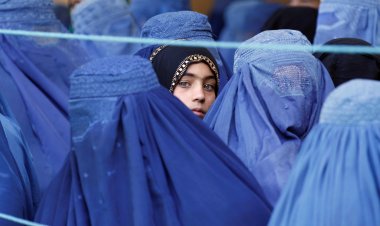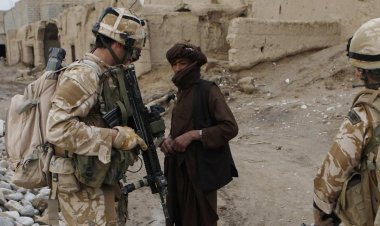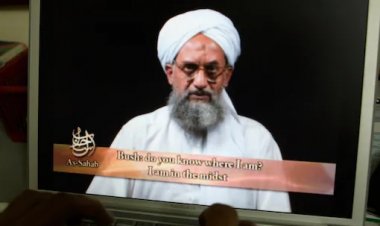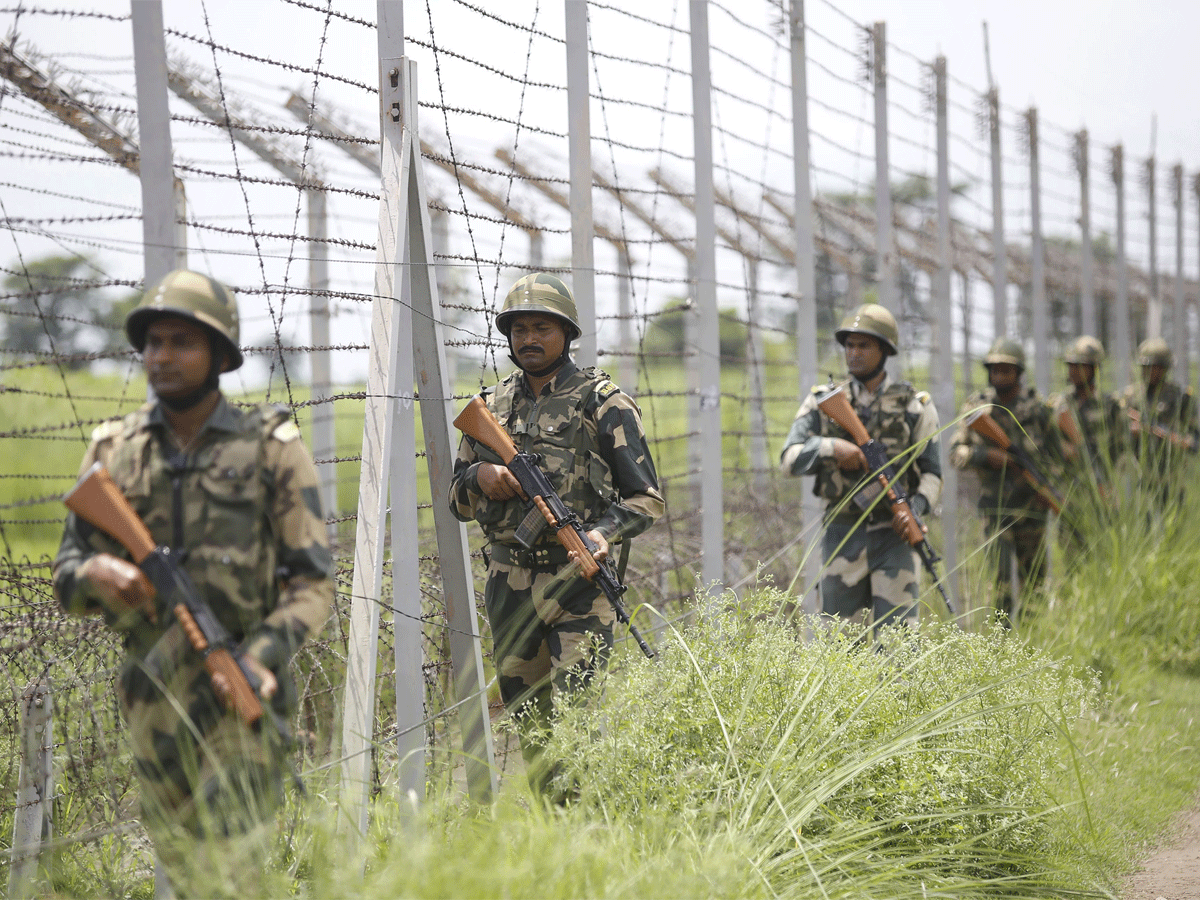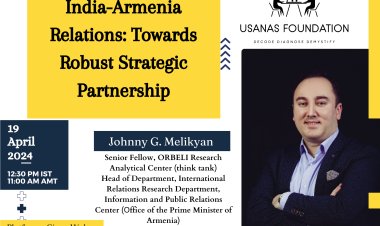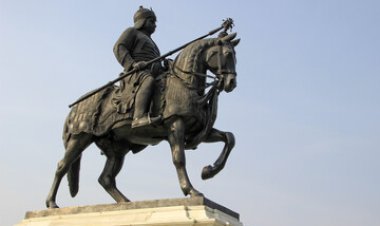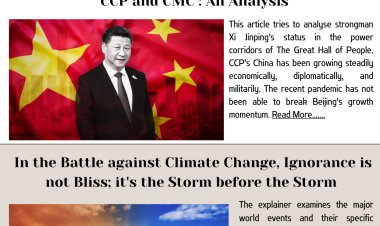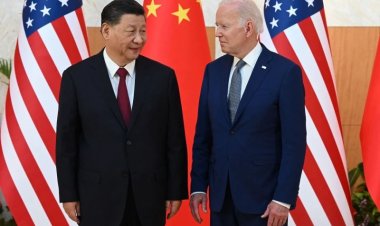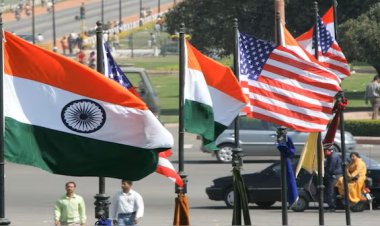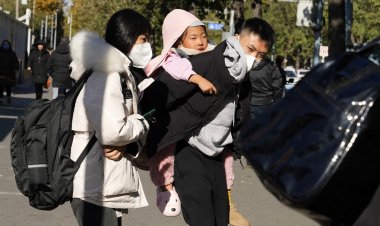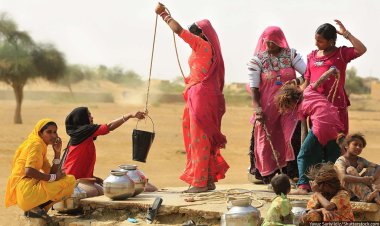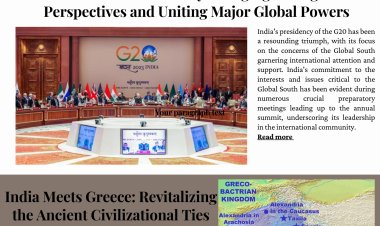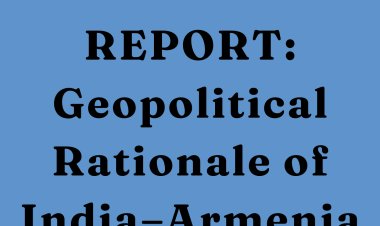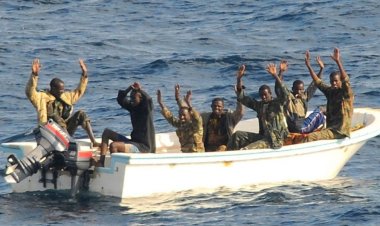Research Paper : 02

Issue Brief 02
By Frank Lehberger
Abstract: This paper is intended as a broad analysis of the socio-political, historical, ideological and strategic reasons behind the accelerated ideological drive of the Chinese Communist Party under Xi Jinping in 2020 to forcibly subject religious institutions of Tibetan Buddhism in Chinese occupied Tibet to tighter assimilationist and communizing policies.
1.0 Basic ideological underpinnings of Xi Jinping’s rule since 2012
Xi Jinping has been general secretary of the Chinese Communist Party (CCP) since October 2012. After rising to absolute power in October 2016, Xi began to resuscitate a personality cult and centralization of power that the CCP had not seen since the death of the ‘Great Helmsman’ Mao Zedong in 1976. During the First Plenum of the 19th Central Committee in October 2017, the CCP enshrined “Xi Jinping Thought on Socialism with Chinese Characteristics in the New Era” (XJTSCCNE) as its new official ideological program. [1] This move managed to place Xi’s alleged ideological outpourings on par with such sacrosanct dogma as Mao Zedong Thought, and Deng Xiaoping Theory.
[2] XJTSCCNE is representative of Xi’s increasingly singular and uncontested ability to shape the ideological trajectory of the CCP in the twenty-first century. [3] John Dotson of the Jamestown think-tank believes that XJTSCCNE, “relies heavily on the dogmatic repetition of slogans rather than [on] clearly articulated ideas.”[4] XJTSCCNE does rest on the following three pillars:
1. restoration of the People’s Republic of China (PRC) to ‘imperial splendor’, basically Xi’s vision of the PRC as an all-powerful and re-unified monolithic nation of imperial dimensions. In the PRC this programmatic vision is known as the “Chinese Dream”. [5]
2. total CCP control over Chinese politics and society
3. re-modeling of methods of governance and the organizational re-building of institutions at government and CCP level.
Because Xi was anointed in October 2016 as the undisputed “core” (核心, hexin) of leadership during the 6th plenum of the 18th CCP Central Committee, the above-mentioned third pillar of XJTSCCNE “is often expressed in terms of greater centralization of power at the top echelons of the CCP, and as demands for stricter personal loyalty to Xi Jinping.”[6]
Stressing absolute loyalty to the “core”, however, unwittingly reveals the insecurity of Xi’s actual position at the apex of the CCP hierarchy. It should be noted that both Mao and Deng commanded far more loyalty among the CCP rank and file by the sheer power of their charisma, ruthlessness and political wits — three qualities that mostly elude Xi Jinping— rather than relying on underlings swearing oaths of allegiance, or on a list of grandiose titles that Xi seems to amass by the dozens. [7]
2.0 The Seventh Tibet Work Forum – a Chinese book with seven seals
The important ‘Seventh Tibet Work Forum’ (7TWF) has recently taken place in Beijing, starting on August 28 and concluding one day later on August 29, 2020. During the last forty years, the TWF has been convened altogether seven times already, with the first one in 1980. It’s official name is: Central Forum on Tibet-Work. [8] All seven TWF in 1980, 1984, 1994, 2000, 2010, 2015 and 2020, were chaired by the respective CCP general secretaries at the time.
By definition the TWF is supposed to be the highest policy making body, regarding Tibetan affairs and all Tibetan people, for the coming five to ten years.
It must be underlined here that the (politically correct) communist Chinese definition of ‘Tibet’ and ‘Tibetans’ has remained for seven decades a complicated and thorny issue in the PRC, basically since the Chinese invaded independent Tibet in 1950. In contrast, for the Tibetan government in exile of H.H. the Dalai Lama (TGE), representing all Tibetans living inside and outside the PRC since 1959, this matter is clear-cut and straightforward. [9] Tibetans are all those persons who speak Tibetan, eat the Tibetan staple food (tsampa), and whose ancestral homes are located on the Tibetan plateau, in the ‘Three Major Regions’ (Cholka-sum) of Greater Tibet. [10] The geographical area known as the Tibetan plateau covers about 2.5 million square kilometers, roughly the same size as Argentina. The TGE has most of the time considered the Three Regions of Greater Tibet as a territorial entity of religio-cultural nature, akin to catholic dioceses, and not as an entity of political or legal significance.
For political and ideological reasons, the concept of ‘Greater Tibet’ i.e. Tibet as a territorially, geographically, socially and culturally unified notion, remains a taboo subject in the PRC. [11] What the Chinese party-state designates as Tibet (西藏 Xizang), is in fact only the Tibetan cultural area of central Tibet (known as: Ü-Tsang), attached to territorial parts of eastern Tibet (the region known as: Kham). This makes up less than 50% of Cholka-sum or Greater Tibet.
The official Chinese name for what could be described as ‘rump-Tibet’ is the Tibet Autonomous Region (TAR). [12] Lhasa is the capital, and the TAR represents only about one half of all areas inhabited by ethnic Tibetan people living currently inside the PRC.
The other half of Greater Tibet is now unevenly divided among the four adjacent Chinese provinces of Gansu, Qinghai, Sichuan and Yunnan. In those ‘Chinese’ provinces, most ethnic Tibetans live regrouped inside smaller administrative sub-divisions, called Tibetan Autonomous Prefectures (TAP) and Tibetan Autonomous Counties (TAC). [13][14] There are altogether 10 TAP and 2 TAC in the PRC.
When comparing TAR, TAP and TAC with each other, one starts to notice the subtle lexical and semantic nuances that the Chinese have put into place to differentiate between ‘Tibet’ and ‘Tibetans’. Apart from semantics, the obvious Chinese rationale for establishing TAP and TAC outside the borders of the TAR is rooted in Chinese historical narratives and in age-old divide-and-conquer tactics.
Ironically the TWF covertly embraces the Chinese taboo-theme of Greater Tibet, as the TWF arrogates itself the authority to lord over all ethnic Tibetans inside the PRC. Even the Tibetan diaspora in exile everywhere on the globe is not supposed to be outside its rapacious grasp.
In CCP jargon, Tibetan people inside the PRC are referred to as the “Tibet national minority” (西 藏少数民族) Xizang Shaoshu Minzu, or Zang-Zu (藏族) for short. [15] The technical term ‘national minority’ (少数民族 Shaoshu Minzu) is itself an invention of the CCP after taking power in 1949. [16] Without saying so, this tacitly implies that the Han-Chinese are always to be recognized as the PRC’s ‘national majority’.
During the recent 7TWF, some three hundred top representatives of Party, State and the military, including the entire Politburo plus the Central Military Commission have reportedly attended the Forum, chaired by CCP general secretary Xi Jinping.
Other top representatives are those of the CCP, United Front Work Department (UFWD), the security apparatus, of ministries under the State Council, including selected provincial CCP bosses from the TAR, plus the four other Chinese provinces with sizable Tibetan populations, regrouped in the TAP and TAC of those provinces. Almost all of these representatives are (non-Tibetan) Han-Chinese who are basically ignorant of Tibetan culture, language, religion and traditional livelihood. Not even one is an ethnic Tibetan member of the Buddhist clergy.
During his speech at the 7TWF, Xi Jinping prominently formulated the so-called ‘Ten Musts’, sort of strategic precepts that are supposedly necessary to “long term adhere and fully implement the party's strategy of governing Tibet in the new era.” [17] Therefore these ten tenets are fully integrated within the new ideology of XJTSCCNE. The formulaic ‘Ten Musts’ are known alternatively as the ‘ten major policies for governing Tibet. [18]
1. Must uphold the leadership of the CCP, the socialist system with Chinese characteristics, and the system of regional ethnic autonomy.
2. Must adhere to the strategic thinking of governing the country by controlling the borders and stabilizing Tibet first.
3. Must maintain the unity of the motherland and strengthen national unity; it is the focus of Tibet work.
4. Must adhere to the important principles of governing Tibet according to law, persist bringing prosperity to the people and rejuvenating Tibet, long-term construction of Tibet, uniting the people's hearts, and laying a solid foundation.
5. Must coordinate the domestic and the international situation.
6. Must improve the people's livelihood and unity of people's hearts; to be taken as the starting point and the goal of economic and social development.
7. Must promote exchanges and integration of all ethnic groups.
8. Must firmly persist in the policy-direction of sinicizing the religions in our country and of managing religious affairs in accordance with the law.
9. Must persist in putting environmental protection first.
10. Must strengthen party building, especially political building.
Among those ten points, the present analysis is only scrutinizing the eight points, namely: “firmly persisting in sinicizing the religions in our country and of managing religious affairs in accordance with the law.
Interestingly during the 7TWF, Xi Jinping did not single out Tibetan Buddhism. It is all religions that are to undergo accelerated sinicization, since giving the explicit order to do so some time during his first term as general secretary from 2012 to 2017.
In another recent speech however, Xi has singled out Tibetan Buddhism and Tibetan society, stressing that, “Tibetan society must be part of the ‘collective consciousness of the Chinese people’, and its religion must be ‘Sinicized’.” Furthermore, the CCP has, “to actively guide Tibetan Buddhism to adapt to the socialist society and promote the Sinicization of Tibetan Buddhism.”
As a reaction, Human Rights Watch China Director Sophie Richardson has said the following in an interview with Voice of America: “Individuals are free to believe what they like and worship as they like; these are not [human] rights states can give, take away or otherwise dictate.”
Besides being a blatant infringement of a basic human right, it is also noteworthy to underline the surrealist nature of a group of atheist apparatchiks, who per ideological definition must remain ignorant of all spiritual and religious matters, but who are meeting to ‘manage’ Tibetan Buddhism.
2.1. The initial TWF and their link to earlier sinicization attempts after 1979
Back in 1978, and during Deng Xiaoping’s gradual ascent to CCP leadership, he coordinated with the United Front Work Department (UFWD) to contact members of the Tibetan government in exile of H.H. the Dalai Lama (TGE), based in the northern Indian town of Dharamsala. [19] By using an intermediary (a director of the state-owned Xinhua News Agency based in Hong Kong), Deng invited the elder brother of H.H. the Dalai Lama of Tibet, Gyalo Thondup, to come to Beijing and eventually inspect the local situation in Tibet emerging from nearly twenty years of Maoist political and social excesses. In February 1979, Gyalo Thondup finally got his formal invitation for a meeting with Deng Xiaoping, who still held the secondary rank of Chinese Vice-Premier (国务院副总理 Guowuyuan Fuzongli). Their meeting took place on March 12, 1979, and Deng —apparently in a generous mood relating to Tibet— stated “all issues except the question of independence could be discussed.” [20] He further suggested that people from the TGE should “investigate” the situation in Tibet (TAR). Deng said further, “it is better to see with one’s own eyes than to hear something a hundred times from other people.”[21]
Meeting protocols kept by the TGE state the following: “On 2 August 1979, H.H. the Dalai Lama sent the first Tibetan fact-finding delegation to Tibet and China. During their visit to various parts of Tibet for nearly six months, the Tibetan delegation found that the claims of the CCP socialist progress in Tibet had little substance – the living standard of the Tibetan people was extremely poor, economic development minimal, and the destruction of religion and monastic institutions almost total. On their way back to Dharamsala, the Tibetan delegation reported their findings to Beijing”. [22]
As a result of these events, the CCP central committee convened the first TWF on March 14 and 15, 1980 in Beijing. It was chaired by the comparatively liberal CCP general secretary Hu Yaobang, who also accepted the work-reports of CCP cadres with Tibetan ethnic background, put in charge of the TAR, e.g. Ngapo Ngawang Jigme the Vice-Chairman of China’s rubber-stamp National People's Congress (NPC). Other prominent members of the TWF were the Vice-Premier of the State Council, Wan Li, the director of the State Commission of Nationalities Affairs, Yang Jingren, and the Vice-Minister of the Organization Department of the CCP, Zhao Zhengqing.
The foremost aim of the first TWF was to initiate a process of critical reflection on the previous thirty years of disastrous Maoist policies. Another aim was to learn valuable lessons and to correct policy mistakes in order to achieve a unified understanding of Tibet-related work within the CCP. The TWF was also given the task “to work for the return of the ‘Dalai clique’ and the Tibetans abroad to the motherland.”[23]
The basis for these policy assessments and measures taken by the TWF, were legal reforms adopted at the January 1980 meeting of the rubber-stamp National People’s Congress (NPC) in Beijing, during which CCP leaders had announced “that a new law would be enacted to ‘realize the right to autonomy’ of the minority nationalities.”[24]
Right after the first TWF meeting in Beijing, Hu Yaobang led members of the TWF to a fact finding trip to the TAR, which lasted from May 22 to 31, 1980. During a conference with local Tibetan CCP leaders in Lhasa on May 29, Hu publicly announced a relatively liberal ‘six-point reform program’ (建设西藏要做的六件大事 Jianshe Xizang yaozuode Liujian Dashi). [25] This new program was meant to replace previous hard-line Maoist assimilation policies with more preferential policies favoring the Tibetans. These however were only thinly disguised strategies of co-opting them. Hu hoped to achieve this by fostering a revitalization of Tibetan culture and religion, including giving Tibetans back their language rights. Then he promised to withdraw the large numbers of ethnic Han-Chinese CCP cadres and replacing them with ethnic Tibetan CCP cadres. In the economic policy domain, he pledged to develop the infrastructure, in order to allow the TAR to grow economically, which in-turn was thought to improve the standard of living of Tibetans. Economic tools employed were taxation and pricing, i.e. temporary elimination of taxes and "below-market" quota sales.
However, unlike in the early 1950s, Deng and Hu were not willing to permit a separate, non-communist government in Lhasa, identical with the TGE and led by H.H. the Dalai Lama of Tibet. Hu was adamant that Tibetans would from now on be ruled by local ethnic Tibetan members of the CCP, loyal to Beijing.[26] This in fact minor concession, was considered a major improvement, compared to the calamities that Maoist policies had inflicted upon Tibetans.
The second TWF was held in 1984 and lasted an entire month. There again the relatively liberal Hu, delivered a series of speeches, announcing that the CCP would allow further liberalization and would fully abandon Maoist policies in the TAR. This included the coercive assimilation of Tibetans into the mainstream of (Maoist Chinese) socialist society, via Marxist-Leninist class-struggle, collectivization of agricultural and industrial production as well as vicious acts of iconoclasm. [27]
Liberalization was finally arriving in the TAR, but even during those hopeful days, the CCP drive to gradually assimilate Tibetans and sideline the TGE, never ceased. This is corroborated by Deng’s somewhat duplicitous and conflicting remarks made during his first meeting with Gyalo Thondup in March, and other subsequent remarks he made during the official visit of former U.S Vice-President Walter Mondale in Beijing on August 27, 1979.
In March, Deng reportedly told Gyalo Thondup that “he was keen to improve the lot of the Tibetan population.(...) he [Deng] would like to invite the refugees in India and abroad to return to Tibet (...).”[28]
During his August meeting with Vice-President Mondale however, Deng was recorded voicing much more candid assessments on his previous meeting with Gyalo Thondup. Deng was reportedly saying: “(...) for the matter of the Dalai Lama, that is a small matter. We made our position clear. It is not a very important question because the Dalai Lama is an insignificant character. (...) If he wants to come back, he could still live in that house [in Beijing]. Of course, it is an illusion on his part. The idea of wanting to have a state of Tibet. (...) Some of his important officials [included in the first fact-finding delegation] have recently come back and have gone to Tibet to see officials and conditions there.”[29]
Later, in July 1981, Gyalo Thondup visited Beijing again and met Ulanhu, the powerful director of the UFWD, and Yang Jingren (杨静仁), the ethnic Hui-Muslim Director of the State National Minority Affairs Commission (国家民族事务委员会 Guojia Minzu Shiwu Weiyuanhui); for more on the UFWD, refer to endnote 19.
Ulanhu is reported to have suggested that it would be “better for the Dalai [Lama] and his followers to return at the earliest”.[30]
These political moves and statements fully support the theory that since the beginning, Deng and the rest of the CCP leadership did never have any real intentions of granting meaningful autonomy to Tibet within the PRC. Their only aim was to better control Tibetan Buddhism and assimilating Tibetans, by luring H.H. the Dalai Lama of Tibet back home and using him as a puppet, or as an isolated figurehead at best.
To achieve his long-term goal of assimilating Tibetans more effectively, Deng also began to borrow from the reviled Chinese nationalists, a less murderous, but equally destructive concept, known as: ‘Chinese Nation’ (中华民族 Zhonghua Minzu). Deng and his subordinate Hu Yaobang began to revive an adapted communist version of ‘Chinese Nation’, complete with affirmative action, preferential policies for National minorities. The UFWD was again given a prominent role in this endeavor.
To read more, Download the full Issue Brief.
Frank Lehberger is a seasoned Sinologist, multilingual translator, author, political analyst and expert China watcher, focusing on ethnic minority policies and Chinese human rights violations committed in Xinjiang and Tibet. He is also Senior Fellow at Usanas Foundation.

